Home Modifications for the Visually Impaired or Blind – The Complete Guide
Posted in: I'm Moving, Home ImprovementIf you are visually impaired or blind (or caring for someone who is), modifying your house to fit your specific needs can make all the difference. It can allow you to move around more easily and complete day-to-day tasks in less time.
While everyone is different and there are varying degrees of vision loss, there are usually fairly simple, low-cost changes you can make to the spaces you spend the most time in.
If you or your loved one’s vision is gradually diminishing, you can start making these changes ahead of time for added convenience. If the vision loss is sudden or you have a child that is visually impaired, there are adaptive techniques you can learn to help your days go by smoothly.
In either instance, it’s important to ensure your living space is safe, comfortable, and easy to navigate. In this guide, we’ll show you how to make sure your home is organized in a way that meets the most important requirements.
Update: If you haven’t made the move yet, here is a 10 step guide to moving for the blind and visually impaired.
Chapters
Types of Visual Impairment
First off, let’s explore the varying degrees of visual impairment. Visual impairment usually means that both eyes are experiencing a significant loss of vision that cannot be fixed with glasses. The two main categories of visual impairment are:
Low Vision – These people are partially sighted, which means they can see to varying degrees but have a visual acuity of 20/70 or poorer. Experiencing low vision to the point that it interferes with your daily life can be incredibly frustrating. People with low vision may require special equipment and/or modifications.
Most people described as “legally blind” have some vision, but are experiencing enough vision loss to be entitled to government or private agency services. Their vision is usually around 20/200 or less. The degrees of visual impairment are:
-
- Moderate Visual Impairment: 20/70 to 20/160
- Severe Visual Impairment (Legally Blind): 20/200 to 20/400
- Profound Visual Impairment (Legally Blind): 20/500 to 20/1000
Those with profound visual impairment are often able to perceive the difference between light and dark, or daylight and night time. Some of these people can recognize forms or where the light is coming from, which allows them a bit more flexibility than those who are totally blind.
Total Blindness – These people have no light perception and are unable to see forms. Around 85% of people with eye disorders have some remaining sight, while only 15% of them are totally blind. Being totally blind is the most difficult visual impairment to live with, but also the rarest.
Home Modifications for Those With Low Vision
If you or a loved one is living with one of the above types of visual impairment you will want to outfit your home in a way that will make life more efficient. Depending on the degree of visual impairment, there are simple adjustments that can be made to help with your day-to-day activities.
Thankfully, many of these modifications are low-cost and can be fairly easily implemented. It’s just a matter of knowing the basics and planning.
Adjust the Lighting
You will want to provide plenty of light in the areas of the home that are used for recreation, reading, and socializing. The light should always be aimed at the point of focus, i.e., where you will be doing work, not at the eyes. Tips to help provide adequate lighting around the house include:
- Adding floor and table lamps around the living room, dining room, kitchen, and bedroom. Clip-on lights can be placed strategically around the house for added convenience.
- Use lighting that is 60-100 watts. Replace burned-out bulbs regularly so that you are able to see better.
- Allow for natural light throughout the home by using adjustable blinds or sheer curtains.
- Experiment with lighting to find out which works best for your individual needs. There is halogen, fluorescent, incandescent, or flood lighting and most people will prefer different ones. It’s worth noting that fluorescent light does bother many visually impaired people.
- Keep a flashlight or heavy-duty light on a keychain or have a few around the house in case you need additional light at night.
- Make sure light is uniform throughout your entire hallway to more easily identify where it curves or ends.
Rearrange the Furniture
Rearranging the furniture in your house can help you move around more easily and avoid injury. There are also certain ways you can arrange your furniture to add convenience and functionality to your living space. You can:
- Place mirrors strategically to avoid glare or reflecting light.
- Keep some chairs near the windows in case you want to read, work or craft in the natural light.
- Arrange furniture close together so that you can easily converse with others.
- When buying new furniture, try to pick upholstery with texture. This will help you identify the different pieces of furniture better.
- Place brightly colored vases or lamps near key items of furniture so that you can locate it more easily.
Eliminate Safety Hazards
Feeling safe inside your own home is important. There are a number of things you can do to prevent falls and other injuries—and most of them are quite simple. You can:
- Keep desk and table chairs pushed in and train your family to do the same. All of the time. No exceptions.
- Use non-skid, non-glare products to clean and polish your floors. Avoid waxing floors, which can make them slippery!
- Remove low-lying objects that might be trip hazards such as coffee tables and end tables.
- Ensure there are no cords in any of the pathways so that you don’t trip.
-
Make sure electrical cords are removed from pathways or taped down securely.
- Tape down any area rugs you have and replace any worn carpeting or floor coverings.
- Keep all floors dry and wipe up any spills immediately.
- Install grab bars or safety rails in high-slip areas like your bathroom or on the stairs.
- Mark step edges with yellow reflective tape so that you can easily identify them.
- Always keep your fire extinguisher and first aid kit in the same, easily accessible place.
- Make sure all exits are marked with a bright, contrasting color in case of emergency.
- Have smoke and fire alarms checked often, and ensure they are loud enough that you can hear them in all areas of the house.
Use Contrasting Colors
Keep the color principles top of mind as you prepare your home. Know that bright colors are often the easiest to see since they reflect light. Solid, brighter colors such as orange, red and yellow are more visible than their muted counterparts.
It’s important to keep in mind that dim light can wash out certain colors, while bright light can amplify them. Test what works best for you, and use contrasting colors to make the areas of your house easier to distinguish.
- Use brightly colored vases, lamps or sculptures to help identify where key pieces of furniture are.
- Avoid upholstery and rugs that are patterned. Stripes and checks can create confusion for some people who are visually impaired.
- Use color to indicate changes in surface level (such as on the stairs).
- Use contrasting colors to warn about places that may be hazardous or require extra attention (such as fluorescent tape on the inside of doors or cabinets that may be ajar).
- Color-code household items you use often or bills and documents you may need to work with. (Brightly colored Post-it notes work great!)
- Drape a brightly colored blanket or towel in a contrasting color on the back of your favorite chair or your spot on the couch.
- Use dark, solid colors as borders around white or light objects (such as a light switch). This will help it to stand out.
- Place dark objects (like chairs) in front of lighter-colored walls which will also help these items to stand out.
- Avoid using clear glass dishes and cups, as they are more difficult to see.
- Paint door knobs and door frames a bright color so that they are easier to see.
- Use a different color of paint on the ceiling than the walls.
- Use solid (non-patterned) rugs to help you identify different areas of the home.
Create an Organized Environment
If you keep your home organized it will be easier to find things when you need them. It can also eliminate any tripping hazards and reduce frustration when doing everyday chores. Here are some tips to help you say organized:
- Label, label, label. Label everything in your home, from reusable bottles to hangers for clothing to on/off switches. You can even label cabinets!
- Use drawer dividers and closet organizers to separate clothing.
- Label clothing with the letter of the clothing color on the tag.
- Develop a system to keep food and toiletry items organized. Always keep these items in the same place and label them as necessary.
- Always keep chairs and other easily movable furniture in the same place.
- Use large numbered devices for telephones, timers, calculators or anything with numbers that need to be seen.
- Train family members to respect the organizational system you’ve developed. Explain to them why and how it helps you.
Additional Home Modifications for the Totally Blind
If you or your loved one are fully blind, there will be some additional unique procedures that you will need to implement. (Of course, the inability to see light, color or form will make the lighting and contrast instructions from the last section impractical). There are also extra precautions you will need to take to stay safe and organized in your house.
However, there are still plenty of inexpensive, simple ways to make your house safer and more livable.
Remove Obstacles and Hazards
As with those who have low vision, people who are fully blind will want to remove as many trip hazards and obstacles as possible. Things should always be placed in the same spot, and you should make sure your family follows these house rules whenever possible. Other tips to keep yourself safe from hazards at home include:
- Install a phone entry system for your front door so that you can speak to anyone who comes to it.
- Avoid having any low-hanging lamps or other obstacles you could bump your head on.
- Keep furniture in the same place at all times and instruct family members to do the same.
- Identify spots throughout your home where you can put your walking cane down and easily retrieve it again.
- Keep anything that can be easily knocked off a table away from the edges, perhaps avoid having too many lamps, art or breakable sculptures.
- Label all medicines and any unidentifiable food with braille labels.
- Keep any cleaning products in a safe cabinet and ensure each product is properly labeled. It can be handy to keep these in a completely separate spot from the food products to avoid contamination.
- Avoid having a flat-topped stove in your kitchen. Your stove should have a change of texture to indicate where the burner is located. If possible, avoid easy to turn knobs on the stove and oven.
- Install handrails in the bathroom, by the tub, in the shower and down the side of any stairs in your house.
- Close closet and cupboard doors as soon as you are done with them (and have your family do the same).
Install Safe Flooring
Installing safe, non-slip flooring throughout your home is one of the best things you can do for your safety. Nowadays, there are even tactile warning strips and tiles to help you easily navigate your house. Here are some things you can do to your floor to keep you safe:
- Install warning textiles in front of doorways or changes in level throughout the home.
- Install tactile strips along routes you often take in the house. This will make it more convenient to get around!
- Take away any area rugs or, if you prefer to have them, ensure they are taped down properly.
- Avoid slick surfaces in areas like the kitchen and bathroom. Have a bath-mat (or several) in the bathroom at all times.
Give Your Home a Tactile Effect
Adding tactile elements to your interior design can help you use your sense of touch to navigate your house with ease. There are several things you can keep in mind when designing your home or that you can easily modify after the fact. You should:
- Buy furniture that has textured upholstery. This will allow you to recognize furniture in different rooms by its texture.
- Use tactile markers in your kitchen and bathroom to let you know where things are located and when to use caution.
- Use embossed letter stickers to help you distinguish between different things. For example, an “F” could let you know you are turning on the living room fan.
- Mark toothbrushes or other important items with rubber bands or other tactile aids so that you can easily identify them.
- Use braille labels for anything that needs special identification.
Adaptations to Help With Daily Living and Chores
There are tons of things you can do to make you or your loved one’s day-to-day life more efficient. These home adaptations are simple and can give you a sense of independence and safety while performing everyday tasks.
Label Foods
If there is some usable vision you can use a magnifying glass to identify the foods in your kitchen; however, if you can’t see that well then there are a few modifications you can implement:
- Use braille labels to mark foods and medicines, especially if they can pose some kind of danger (like if you are allergic or need to take a specific dose).
- Use rubber bands to identify certain food or medicine items. Place a different number of rubber bands on each different container.
- Use brightly colored and labeled index cards to label items around the kitchen.
- Use pipe cleaners, velcro, velour pads or foam alphabet letters to label different things (like canned goods).
- Learn to identify kitchen items by their weight, location, sound, size, or shape.
Adapt Your Kitchen
Cooking with impaired vision can be not only frustrating but also dangerous if the right precautions aren’t taken. When cooking, there are a few safety tips, tricks, and adaptations we’d like to suggest:
- Use scoop measuring cups that hold exact amounts such as ½ cup, ⅓ cup, and 1 cup measurements. You can store these inside food canisters like flour, sugar, or oatmeal for added convenience. Always have extra measuring cups nearby when cooking.
- Store spices in baby food jars with a wide mouth for easier measuring.
- Keep a cutting board that has a light and a dark side so that you will have a contrasting surface no matter what you are cutting.
- Store knives in old paper towel rolls so that you don’t accidentally touch the sharpened edge of the blade.
- Keep everything in its place at all times. It will be so much easier to navigate your kitchen if you know exactly where to look.
- Keep a cafeteria tray handy to use as a prep area. This will help you contain any spills and keep you organized.
- Label shelves and drawers, if needed.
Adjust for Housekeeping and Laundry
Even simple chores like laundry can take longer than necessary if you don’t have some modifications in place. There are a few things you can do to make life easier:
- Place tactile stickers on the dials and commonly used settings of your washing machine and dryer. If you share a household, you can use transparent stickers to make sure the rest of your family can see the dials as well.
- Pin your socks together with sock locks before putting them away, and teach your family to do the same.
- Load the dishwasher from back to front and remember to always load knives and forks point-side down.
- Place safety pins in the clothing of the same color or label clothing with a letter of clothing color on the tag.
- Place dividers in drawers and closets to separate different kinds of clothing.
- Label all cleaning supplies with braille or felt letters so that you know what you are cleaning with at all times.
Improve Communication and Technology Usage
Part of feeling at home in your living space is being able to function and use technology normally. These tips can help you stay in touch with your loved ones and the world more easily:
- Make sure your telephones have large print keypads or dials.
- Use felt-tip markers on white paper or 20/20 high-contrast pens when writing.
- Purchase a large-screen, high-definition television to improve your viewing experience.
- Turn your computer’s settings to use speech synthesis to read the on-screen text and relay screen contents.
- Make sure all emergency contact numbers are written largely and clearly or programmed into your phone.
Modify for a Service Dog
If you or your loved one is fully blind you might have a seeing-eye dog. This can be a life-changing opportunity, but it requires lots of preparation. While we could write an entire guide on this subject alone, here are some easy modifications you can make for your service dog:
- Make sure any paths or walkways are large enough to accommodate both you and your service dog.
- Ensure the backyard is fenced and doesn’t have any holes your pet can escape from.
- Give your service dog ways to open and close doors around your house so that they can always get to you. You can do this by adding “tugs” to each door and teaching them how to use them.
- Add tugs to the fridge, freezer or any cabinets you will want them to be able to access.
- Store toxic items securely in a drawer or cabinet your dog doesn’t have access to.
- Install a self-feeding system so that they are always fed and have access to water
- Create a sleeping area for your pup in your room. Make sure it is nearby in case you need assistance but also in a place that you won’t trip over it.
Modification Costs and Funding
While many home modifications for the blind are on the lower end of the cost spectrum, it can still feel overwhelming to make these changes. Making your home comfortable, navigable and safe should be top priority and there are several organizations ready to help.
General Costs of Home Modification
According to HomeAdvisor, the average cost to remodel for disability accommodation is between $1,271 and $8,934. While costs will vary greatly depending on the modifications you require, there are some general price estimates available.
- Devices like glasses, sticks, computer software and rehabilitation equipment cost $120 total a year on average, per person.
- Healthcare, home help, personal affairs, personal care, transportation and social activities can cost almost $2,000 annually.
- A trained service dog can cost anywhere from $40,000 to $60,000 initially and will, of course, require maintenance costs like food and veterinary bills.
- Tactile markers, braille labels and other tactile aids are quite inexpensive, at around $3 for a sheet. Tactile floor tiles and surface indicators can get a bit more pricey depending on how many and what material you buy.
Help with Adaptations
If you have recently become visually impaired or are changing to a new living situation that will need accommodations, you can contact your local social services department and find a social worker that can help fund your home improvements.
If you are a homeowner with savings, it’s likely that you will have to pay for the repairs out of your own pocket. However, if you are unable to, there are options available to help you cover some (or all) of the costs.
HomeAdvisor has a list of tons of grants for disability accommodation in the home, but we’ve listed some of the more well-known ones below.
- V.A. Home Loans and Grants: If you are a veteran, you might be eligible for a special housing adaptation (SHA) grant from the U.S. Department of Veteran Affairs. This would grant you money to adapt a house you own or live in to your needs.
- U.S.D.A. Housing Repair Loans and Grants: Loans of up to $20,000 and grants up to $7,500 are available to low-income citizens aged 62 and older who qualify.
- Self-Sufficiency Grant from ModestNeeds.org: This grant is aimed at people who don’t qualify as low income but still have a need for assistance. They provide adaptive home repairs for families just above the poverty line.
- The National Council of State Housing Agencies (NCSHA): Individuals and families can find several different kinds of support through the NCSHA including loans, grants and help locating helpful organizations in their area.
If your home modifications are going to be major, you may want to consider some of the above resources. Luckily, you can make many of the modifications listed in this guide at a low cost.
We recommend checking with your occupational therapist to see what they recommend before setting in on any home renovations.
Home adaptations for visual impairments are meant to enhance your home and make it easy for you to do the daily tasks you need to do. We hope you found some of our ideas helpful and they make a positive difference in your life.


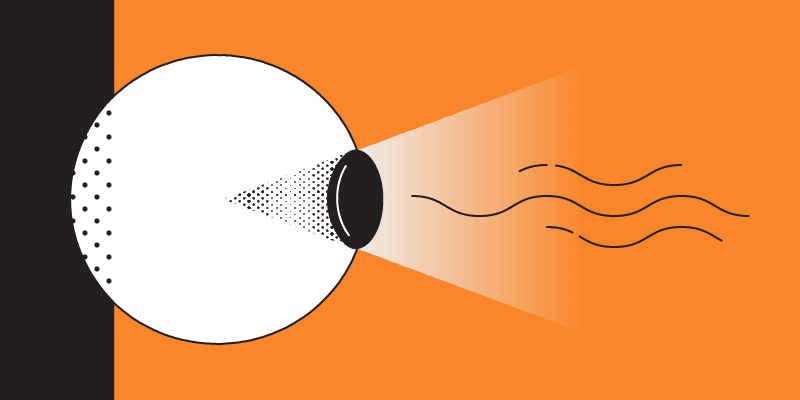
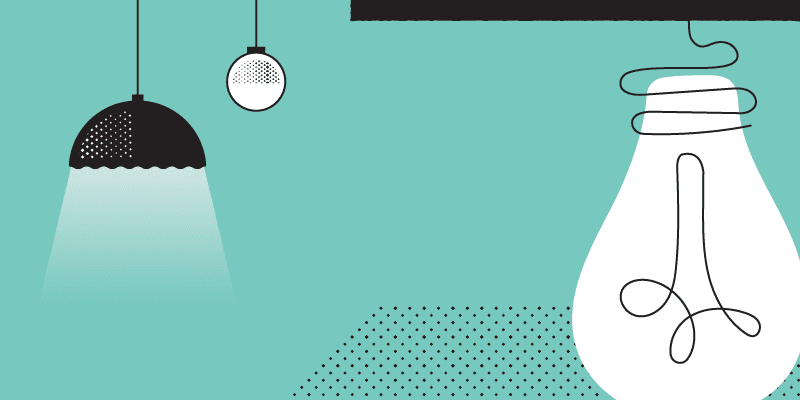

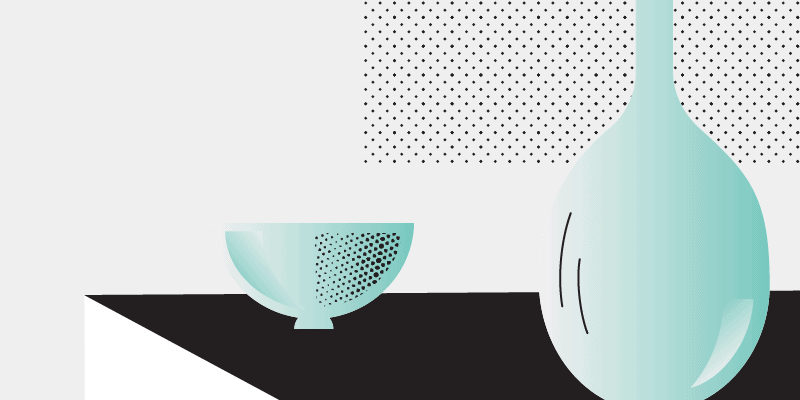



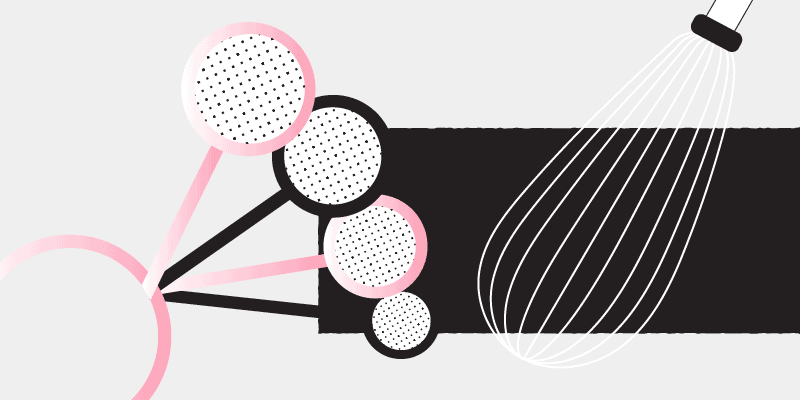





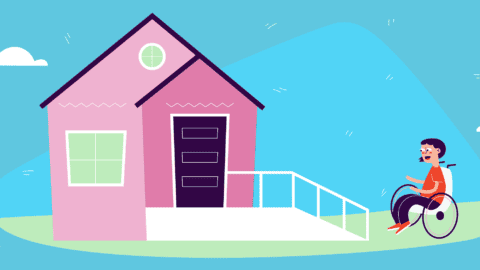
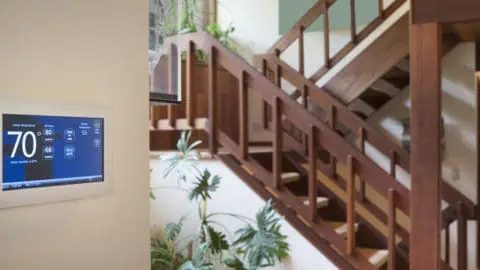
Amy Bovaird
This is a wonderful resource! So many excellent ideas with well-thought out explanations.Thank you so much for posting! Will re-read and share this on my author page!
Amy Bovaird